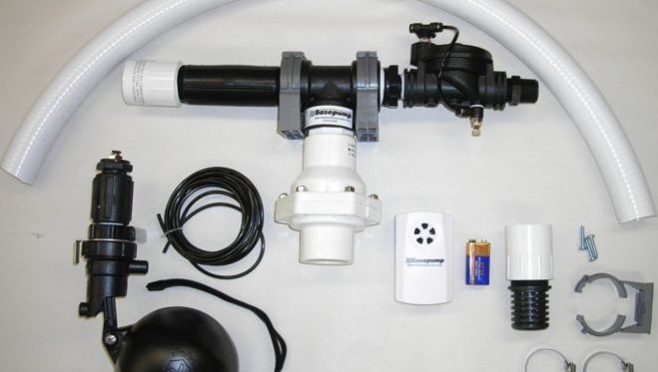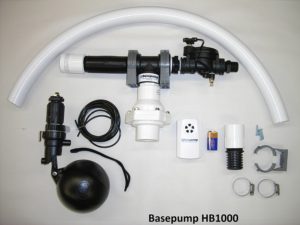 Along with effective gutter and draining systems, a good sump pump is an essential component of a dry basement. But if you’re relying exclusively on an AC sump pump for water removal, you’re always going to be at the mercy of the next power outage, even if you’re using a high end sump pump like the Zoeller M267. Unless you’ve got a generator, this isn’t enough. So what options are on the market for backup systems?
Along with effective gutter and draining systems, a good sump pump is an essential component of a dry basement. But if you’re relying exclusively on an AC sump pump for water removal, you’re always going to be at the mercy of the next power outage, even if you’re using a high end sump pump like the Zoeller M267. Unless you’ve got a generator, this isn’t enough. So what options are on the market for backup systems?
We’ve reviewed most of the backup pumps on the market, and while there are many differences between them, the most important involves the source of power: battery or water. If you want a DC-based backup pump, the best on the market right now is the Wayne WSM3300. But if reliability is more important than speed, you’ll need to leave battery-powered sump pumps behind and move straight to water-based pumps. They aren’t as fast or fancy, but as long as you have water pressure from a municipal line, you’ll be able to pump water out of your basement for decades.
We’ve lately been reviewing a range of water-based pumps, including the Basepump RB 750-EZ, the Basepump RB 750 and the Liberty Pumps SJ10. Today we’ll review the upgraded version of the RB 750, the Basepump HB1000 Water Powered Backup Sump Pump. The key upgrades here are related to maximum water removal rates in gallons per hour. Our full review is below, but if you simply want to know whether to buy it and where, we give it two thumbs up and you can buy it here.
Key Features of the Basepump HB1000 (60 Second Summary)
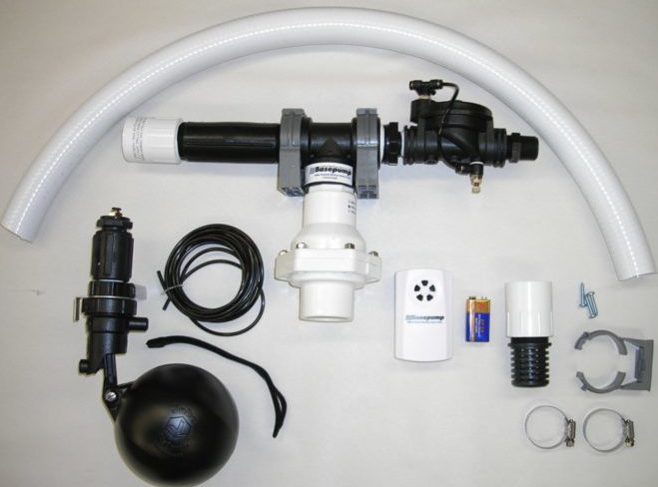 The Basepump HB1000 is a water-based backup sump pump. It requires no AC or DC power, and instead works through water pressure from a city water line. It can pump up to 1,400 gallons of water per hour (GPH) and includes a 5 year Basepump limited warranty. It’s 16 inches long, 6 inches tall, and 4 inches wide while weighing 5 pounds. The part number is HB1000-D while the model number is HB1000.
The Basepump HB1000 is a water-based backup sump pump. It requires no AC or DC power, and instead works through water pressure from a city water line. It can pump up to 1,400 gallons of water per hour (GPH) and includes a 5 year Basepump limited warranty. It’s 16 inches long, 6 inches tall, and 4 inches wide while weighing 5 pounds. The part number is HB1000-D while the model number is HB1000.
The HB1000’s intake is 3/4 inches and you can scale that up to 1 inch or down to 1/2 inch inlets. The discharge size is 1-1/2 inches while the sump intake is 1 inch in diameter. As with the RB 750, you’ll need an inlet supply pressure between 40 PSI and 90 PSI. Two gallons of sump water are pumped with each pumped gallon of city water.
Pumping speed will vary with pumping height and water inlet pressure. The GPH at 40 PSI is 950, which rises to 1,000 GPH at 60 PSI, 1,200 GPH at 80 PSI, and 1,400 PSI at 90 PSI. Max lift is 15 feet, although this will vary with piping configurations and city water pressure.
Like the RB 750 and RB 750-EZ, the HB1000 includes a separate battery-powered high water alarm. The alarm sounds at 85 dB and uses a 9 volt battery, which is included.
How Does the Basepump HB1000 Compare to the RB 750-EZ and RB 750, the Liberty Pumps SJ10 SumpJet, and the Wayne WSM3300?
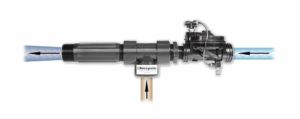 The primary difference between the HB1000 and the RB series involves pumping speed. The RB 750-EZ also has the advantage of coming with a lot of the accessories you’d need for a successful installation out of the box. The HB1000 and RB 750 will require either sweating copper or buying push-fit pipe fittings to fit them to copper, PEX, or CPVC tubing. Alternatively, you can buy the HB1000-PRO, which is the “EZ” version of the HB1000. In terms of pumping speed, the max water removal rate of the HB1000 at 1,400 GPH is more than 50% greater than the max rate of the RB 750/EZ.
The primary difference between the HB1000 and the RB series involves pumping speed. The RB 750-EZ also has the advantage of coming with a lot of the accessories you’d need for a successful installation out of the box. The HB1000 and RB 750 will require either sweating copper or buying push-fit pipe fittings to fit them to copper, PEX, or CPVC tubing. Alternatively, you can buy the HB1000-PRO, which is the “EZ” version of the HB1000. In terms of pumping speed, the max water removal rate of the HB1000 at 1,400 GPH is more than 50% greater than the max rate of the RB 750/EZ.
Compared to the SJ10, the HB1000 still features a greater max pumping speed (1,400 GPH vs 1,188 GPH) but has a narrower range of safe water inlet pressures (40 to 90 PSI vs 20 to 100 PSI). It also comes with a significantly lower max head at 15 feet vs 39 feet. However, the warranty will be significantly longer at 5 years compared to 3 years.
Compared to the WSM3300, the biggest differences involve power sources. With the HB1000, you won’t need any kind of electricity but you will need a municipal water supply. You’ll also get a much longer life due to the inherent design advantages of a water-based pump compared to a battery-dependent sump pump. You have no moving parts that can break and the design is inherently maintenance free. It’s important to keep in mind, however, that the top pumping rate will be significantly slower at 1,400 GPH vs 3,300 GPH, while the max head will also be slightly lower at 15 feet vs 20 feet.
Our Short and Long Term Experiences Installing and Using the Basepump HB1000
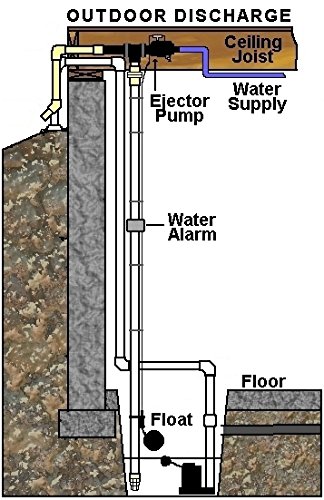 Installing the HB1000 will take about three hours once you have the required components, presuming you have some experience with plumbing. As with Basepump’s other water-based sump pumps, the basic steps are to set the pump up in your basement ceiling, connect your city water line to the pump inlet, your sump pipe to the sump inlet, and the discharge pipe to the sump outlet. To avoid needing to sweat copper, you’ll want to look into buying PEX tubing and SharkBite connectors; they’ll cost a few dollars but will make the job far less technical.
Installing the HB1000 will take about three hours once you have the required components, presuming you have some experience with plumbing. As with Basepump’s other water-based sump pumps, the basic steps are to set the pump up in your basement ceiling, connect your city water line to the pump inlet, your sump pipe to the sump inlet, and the discharge pipe to the sump outlet. To avoid needing to sweat copper, you’ll want to look into buying PEX tubing and SharkBite connectors; they’ll cost a few dollars but will make the job far less technical.
In terms of longevity, you can expect many years of problem free service if your sump pump is like most we’ve seen and heard of from Basepump. In practical terms, this means somewhere between 10 and 20 years of functionality, though you might definitely get more out of yours. As with all water-based sump pumps, the primary risks to longevity are too high water pressure. Your city line needs to deliver no more than 90 PSI; if it delivers under 40, the pump won’t work, but if it delivers more than 90, you’ll break seals and create your own water park in the basement.
Troubleshooting and Installation Tips to Get Your Basepump HB1000 Working Sooner
It’s important to make sure you have enough water pressure from your supply line to power the HB1000. Basepump recommends the bucket test, which involves filling a 5 gallon bucket from an outside spigot (such as one that feeds a garden hose) and timing it. If it takes under 40 seconds to reach the fill line (typically two inches below the brim), you can use the RB750 or EZ. If it takes under 30 seconds, you can use the HB1000/PRO. If it takes under 20 seconds, you can use the CB1500. If you have a frost free spigot, you must reduce your fill times by 25% for accurate results. However, note that if it takes more than 30 seconds to fill the 5 gallon bucket, you won’t be able to use the HB1000/PRO because it won’t receive enough water pressure from the intake line to create the suction effect necessary for sump water removal.
Basepump HB1000 Pros, Cons, and Value Comparison
When it comes to water-based sump pumps, we’re hard pressed to find a faster model under $300 than the HB1000. It’s faster than the entry level RB 750 and RB 750-EZ while maintaining high levels of reliability and maintenance-free use. The main feature we’d like to have would be the inclusion of the accessories necessary for an out-of-the box installation, in order to reduce the need to go shopping for them. However, that’s precisely what the HB1000-PRO is for, so if you want everything you need from the start, you just need to spend a bit more. Whatever you choose, it’s important to remember that when you buy a water-based sump pump, you’re not going to get the fastest pumping speeds on the market out of it; that’s what turbocharged battery-based pumps like the WSM3300 are for. What you get from a quality water-backup pump like the HB1000 is decades of maintenance-free peace of mind, safe in the knowledge that the pump will keep your basement dry as long as you have water pressure. If that’s what you’re looking for, this is a solid choice.
You can buy the Basepump HB1000 here on Amazon. You can buy the Basepump HB1000-PRO here. You can buy the Basepump RB 750-EZ here. You can buy the Basepump RB 750 here. You can buy the Liberty Pumps SJ10 here. You can buy the Wayne WSM3300 here on Amazon. You can buy additional PEX tubing here and SharkBite connectors here. You can buy a silent check valve here.
 If you find our work at PumpThatSump helpful, you can put our relentless reviewing of every pump and fixture on the market to the test by shopping via our links above for whatever you need to make your house a home. Despite being self-employed, we promise not to spend it all on health insurance.
If you find our work at PumpThatSump helpful, you can put our relentless reviewing of every pump and fixture on the market to the test by shopping via our links above for whatever you need to make your house a home. Despite being self-employed, we promise not to spend it all on health insurance.
